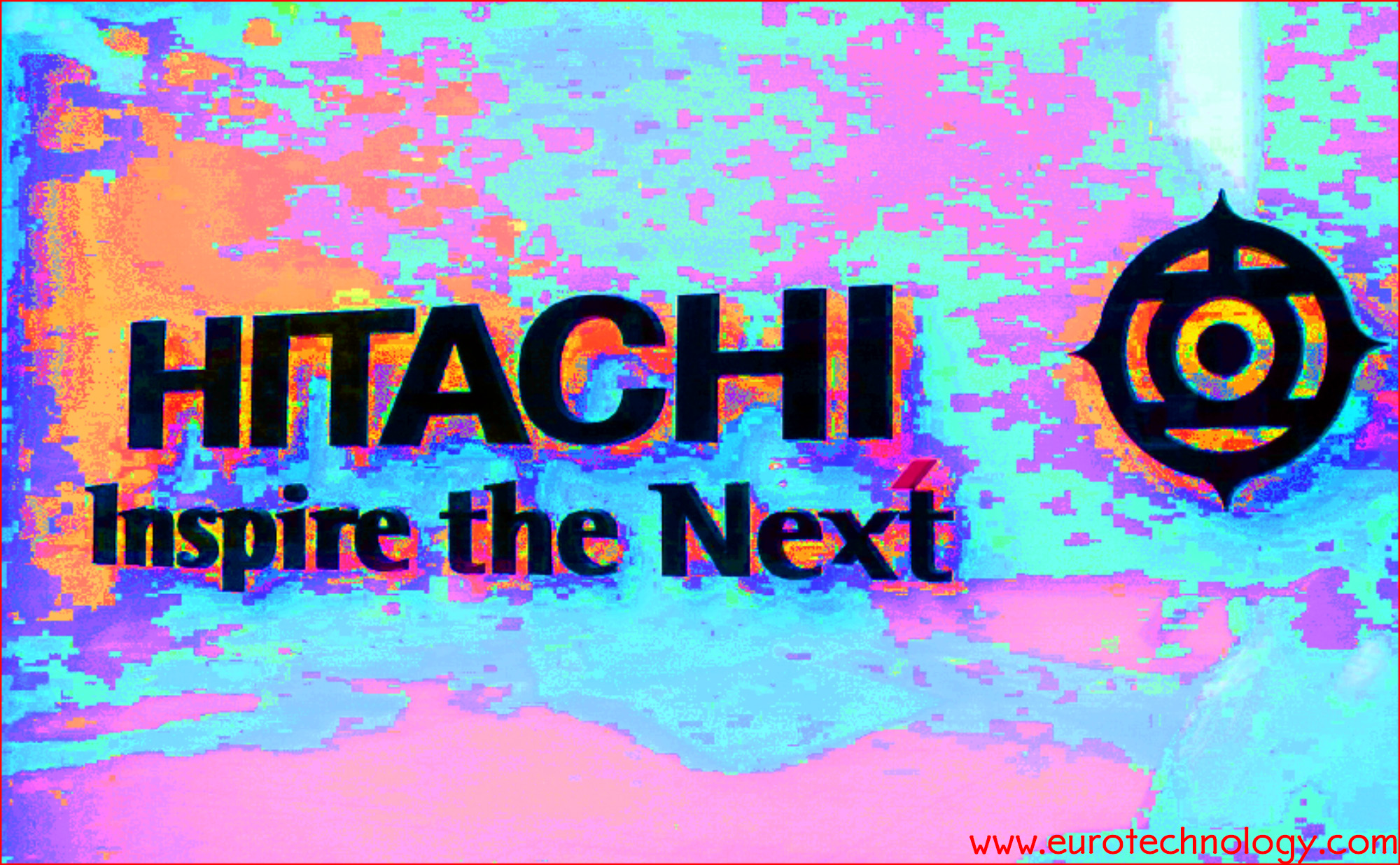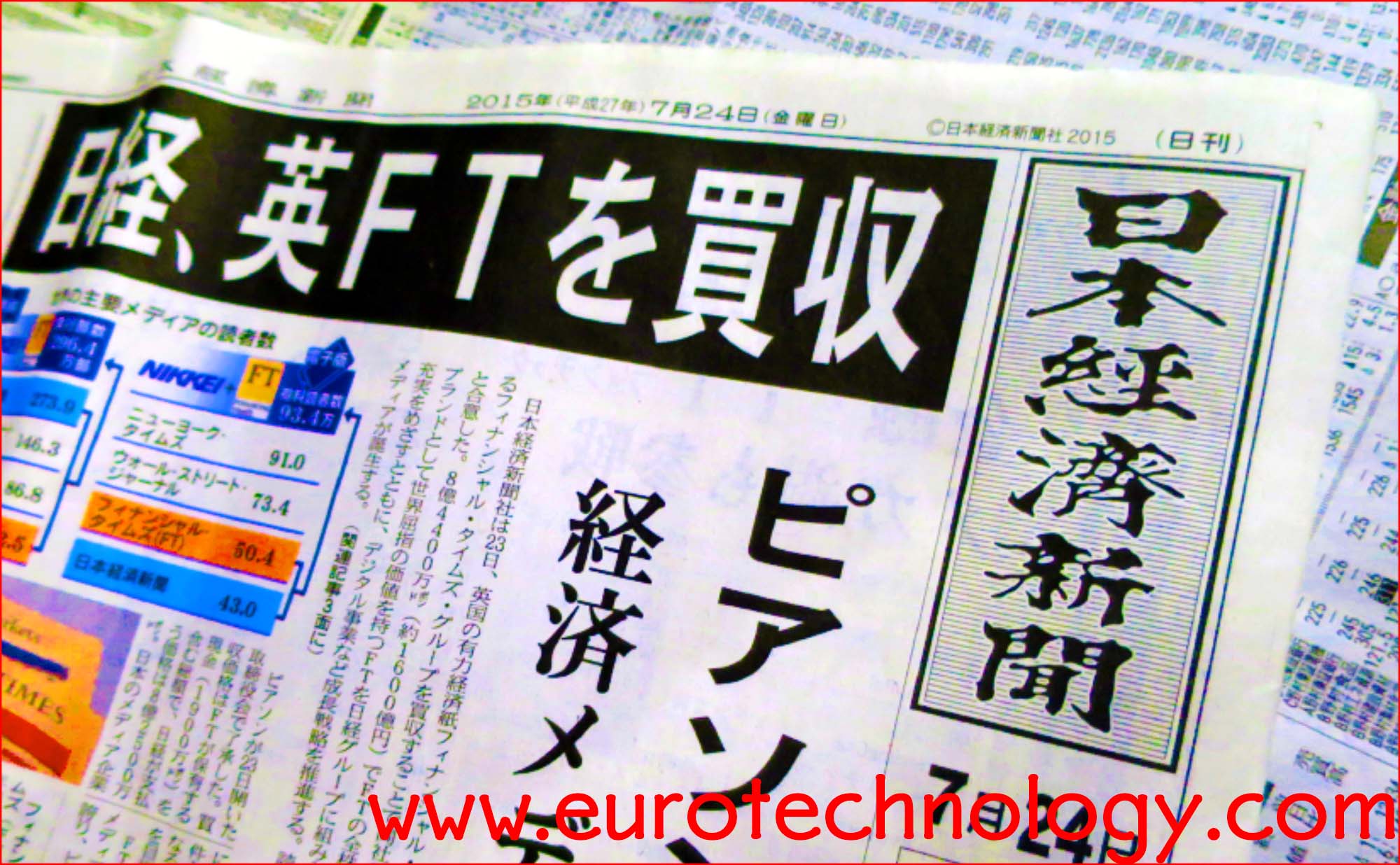Category: M&A
-

Growing your business in Japan (video conference)
Despite being the world’s third largest market, many businesses struggle to break into Japan. The “Growing your Business in Japan” free webinar, organized by the SCI’s Science and Enterprise Group and powered by LabLinks, will provide valuable insights into the challenges of growing a chemistry-facing business in the Japanese market, and how they can be overcome. The host, Dr Alan Steven – Chief…
-

NEC to acquire Denmark’s largest IT company KMD Holding ApS for about 8 billion Danish Kroner (approx. US$ 1.2 billion)
NEC Corporation announced on December 27, 2018 the acquisition of Denmark’s largest IT company, KMD Holding ApS, the holding company of KMD A/S for about 8 billion Danish Kroner (approx. US$ 1.2 billion) from the private equity group Advent International. This acquisition is in line with NEC‘s “Mid-term Management Plan 2020” to shift NEC towards…
-

Daikin acquires AHT for €881m (approx. 114.5 billion YEN)
Daikin Industries Ltd acquires Austria’s AHT Cooling Systems for €881m (approx. 114.5 billion YEN) by Gerhard Fasol World’s largest air-conditioning equipment maker expands to Europe On Monday 26 November 2018 Daikin Industries Ltd announced the planned acquisition of AHT Cooling Systems for €881m (approx. 100 billion YEN). Daikin Industries Ltd [TYO:6367], slogan: “The Future in…
-

Sansei Technologies acquires Dutch roller coaster maker Vekoma
Sansei Technologies, based in Osaka (Japan), on 30 March 2018 acquired 100% of the Dutch roller coaster maker Vekoma. Vekoma Rides Manufacturing BV Vekoma Rides was founded in 1926, initially producing farming and mining equipment. Today Vekoma produces roller coasters and amusement park equipment including the Junior Coaster, the Suspended Family Coaster, Boomerang, Suspended Looping…
-

Dentsu acquires Gleam Futures via Dentsu Aegis Network as a cultural bridge
Dentsu uses London based Dentsu Aegis Network as a cultural bridge to acquire representation of about 40 YouTube stars Dentsu acquires Gleam Futures: invests to acquire 90% ownership Dentsu acquires Gleam Futures, who “develop, monetize & protect” digital-first talent, ie mainly YouTube focused stars. Japanese companies have a dramatically different culture than Western, European or…
-

Roche acquires Chugai Pharmaceutical controlling stake, expanding in Japan, the world’s second largest pharmaceutical market
Japan’s pharmaceutical market is approx. US$ 80 billion – US$ 120 billion, approx. 10% of the global pharmaceutical market by Gerhard Fasol Roche acquires Chugai: Roche KK merges into Chugai in a carefully structured process, with Chugai the surviving company Roche acquires Chugai in a series of carefully crafted transactions, to expand in the world’s…
-

ISOLITE acquired by Hitachi Chemical from private equity fund HQ Equita and others
Private equity fund HQ Equita had acquired ISOLITE in 2010, now sells to Hitachi Chemical by Gerhard Fasol ISOLITE acquired by Hitachi Chemical to build global speciality insulation materials group ISOLITE acquired by Hitachi Chemical from private equity fund HQ Equita, as announced on 27 and 28 April 2017. Isolite – High Temperature Solutions Isolite…
-

Sanofi acquires SSP (エスエス製薬株式会社) from Boehringer Ingelheim in a global asset swap
Japan’s pharmaceutical market is approx. US$ 80 billion – US$ 120 billion, approx. 10% of the global pharmaceutical market by Gerhard Fasol Sanofi acquires SSP (エスエス製薬株式会社), a Japanese OTC pharmaceutical company, founded as a pharmacy in Tokyo in 1765 Boehringer Ingelheim had acquired SSP (エスエス製薬株式会社), a Japanese OTC pharma company founded originally in 1765 as…
-

Asahi Group Holdings acquire five east European beer brands from Anheuser-Busch InBev
Asahi Group Holdings agreed to acquire five European beer brands for €7.3 billion: Asahi Group Holdings (アサヒグループホールディングス株式会社) Copyright (c) 2019 Eurotechnology Japan KK All Rights Reserved
-

Nippon Electric Glass acquires PPG’s European fibre glass operations
Nippon Electric Glass acquires PPG glass fibre manufacturing and R&D in Hoogezand (Netherlands) and Wigan (UK) Reinforcement materials for transportation, energy, infrastructure and consumer markets On June 20, 2016 PPG and Nippon Electric Glass (NEG, TYO:5214) announced that Nippon Electric Glass will acquire PPG’s European fibre glass operations, subject to employee consultations, regulatory and other…
-

SoftBank acquires ARM Holdings plc driven by paradigm shift to Internet of Things (IoT)
On 18 July 2016 SoftBank announced to acquire ARM Holdings plc for £17 per share, corresponding to £24.0 billion (US$ 31.4 billion) by Gerhard Fasol SoftBank acquires ARM: acquisition completed on 5 September 2016, following 10 years of “unreciprocated love” for ARM On 18 July 2016 SoftBank announced a “Strategic Agreement”, that SoftBank plans to…
-

Toray acquires Delta-Tech SpA to expand carbon fiber business in Europe
Toray acquires Delta-Tech: 55% of Italian fiber manufacturer Delta-Tech SpA including Delta-Preg SpA Toray management program Project AP-G 2016: “thorough implementation of growth strategy through innovation and aggressive management” Toray acquires Delta-Tech: acquires 55% of outstanding shares of the Italian prepreg manufacturer Delta-Tech SpA including the fully owned subsidiary Delta-Preg SpA. Delta-Tech SpA and Delta-Preg…
-

Suzuki Volkswagen “Wagen-san” divorce: a teachable moment
“Mr. Suzuki didn’t want to be a VW employee, and that’s understandable” (Prof. Dudenhoeffer via Bloomberg) Suzuki Volkswagen divorce: Volkswagen makes approx US$ 1.3 billion profit, Suzuki comes out more or less even by Gerhard Fasol, All Rights Reserved. 18 September 2015, updated: 27 September 2015 A smiling Martin Winterkorn and Osamu Suzuki (79 years…
-

Mitsui Sumitomo Insurance Company to acquire UK insurance company Amlin
Amlin is an insurer operating the second largest syndicate in London’s Lloyd’s insurance market by Gerhard Fasol Mitsui Sumitomo Insurance Company acquires Amlin for 2.5 billion pounds (approx. US$ 3.85 billion or ¥642 billion) On Tuesday, September 8, 2015, Mitsui Sumitomo Insurance Company announced the planned acquisition of London based insurer Amlin plc for 2.5…
-

Financial Times to be sold to Nihon Keizai Shinbun Corporation (株式会社日本経済新聞社, Nikkei Inc.)
Nikkei won the race. Axel Springer withdrew. £ 94 million made the difference. by Gerhard Fasol On July 23, 2015 at 15:13 (3:13 pm) British Summer Time, Pearson and Nihon Keizai Shinbun Corporation announced the sale of the Financial Times Newspaper to Nihon Keizai Shinbun Corporation for £ 844 million (approx. US$ 1.3 billion) –…
-

TOSHIBA sells KONE holding for approx. US$ 0.95 billion
Toshiba sells its 4.6% holding in Finnish elevator company KONE by Gerhard Fasol TOSHIBA sells KONE holding – fall-out from Toshiba’s accounting issues TOSHIBA sells KONE holding: In the wake of Toshiba’s accounting issues, Toshiba announced the sale of its 24,186,720 shares, corresponding to a 4.6% holding in Finnish elevator company KONE for EURO 864.7…
-

Quipper acquired by Japanese media giant Recruit for US$ 39 million
EdTech venture Quipper was founded 2010 by DeNA veteran Masayuki Watanabe (渡辺雅之) in London by Gerhard Fasol Recruit expands from classified-type magazine sites into education On April 1, 2015, Japanese media giant Recruit acquired London based but largely Japanese managed EdTech venture Quipper for US$ 39 million, providing good returns for three investors, Atomico, Benesse…
-

Nidec acquires automotive pump company Geräte- und Pumpenbau GmbH Dr. Eugen Schmidt
Electrical water pumps (EWP), electrical oil pumps (EOP) “for everything that spins and moves” by Gerhard Fasol Nidec acquires German pump manufacturer Geräte- und Pumpenbau GmbH Dr. Eugen Schmidt via the subsidiary Nidec Motors & Actuators (Germany) GmbH (“NMA(G)”) on February 2, 2015. Geräte- und Pumpenbau GmbH Dr. Eugen Schmidt and subsidiaries have been renamed:…
-

Nidec acquires power generators manufacturer Motortecnica s.r.l.
Nidec continues acquisitions in Europe in the motor and electrical equipment sector Nidec: “for everything that spins and moves” Nidec acquired the Italian electrical machinery construction and repair company Motortecnica s.r.l. on May 15, 2015 via its Italian subsidiary Nidec ASI S.p.A. (formerly, Ansaldo Sistemi Industriali S.p.A), which Nidec had acquired in May 2012. Motortecnica…
-

LIXIL announces losses of YEN 33.2 billion (US$ 265 million) due to Joyou AG’s insolvency filing
LIXIL (“Link to good living”) acquired approx. 70% of German listed Chinese subsidiary Joyou AG via the GROHE acquisition Joyou AG files for bankruptcy On January 21, 2014, LIXIL had acquired 87.5% of the German bath fixtures company GROHE Group (“Pure Freude am Wasser”). The GROHE Group owns 72.3% of Joyou AG, thus Joyou AG…
-

abaGada, Israeli digital performance agency, acquired by Dentsu and to be rebranded as iProspect
Dentsu continues acquisition of digital and mobile agencies in Europe and Israel To overcome cultural issues of a traditional Japanese leading corporation, Dentsu acquires via London based Dentsu Aegis Network by Gerhard Fasol On April 20, 2015 Dentsu announced another investment in its quest to strengthen its global footprint and to strengthen capabilities in mobile…
-

Sompo Japan Nipponkoa Holdings Inc to acquire 15% of French reinsurer Scor SE
Sompo continues globalization Sompo to acquire 15% of Scor SE for approx. US$ 915 million On March 6, 2015, Sompo Japan Nipponkoa Holdings Inc (損保ジャパン日本興亜ホールディングス株式会社) announced the investment in the French reinsurer Scor SE, as follows: Acquisition of 15% share holding corresponds to approx. € 0.83 billion (= US$ 0.9 billion) based on the current…
-

MixRadio: from Nokia to Microsoft to LINE
Messaging giant LINE continuous globalization MixRadio will complement LINE’s local Japanese LINE Music service by Gerhard Fasol In December 2014, LINE and Microsoft announced that LINE will acquire the streaming music service MixRadio from Microsoft. LINE already operates a Japan-only streaming music service “LINE Music”. Since music licensing is largely country or region specific, with…
-

Nikon enters medical sector with offer for acquisition of Optos plc – “The retina company”
Nikon diversifies from digital cameras to medical imaging Retinal imaging market estimated to grow to US$ 530 million in 2019 Currently 70% of Nikon’s business are digital camera, a rapidly shrinking market due to the popularity of smartphone cameras. Inspired by SONY‘s investment in medical imaging company Olympus, Nikon diversifies from digital cameras into medical…
-

NTT Communications reportedly in talks to acquire German data center operator e-shelter facility services GmbH
NTT Communications to continue global expansion e-shelter offers about 90,000 square meters of data center space in 9 locations NTT Communications is reported by Nikkei to be in negotiations to acquire Frankfurt based e-shelter facility services GmbH for approximately YEN 100 billion (US$ 840 million). NTT Communications acquisition is driven by the need to grow…
-

Hitachi agrees with Finmeccanica S.p.A. to acquire rail business of AnsaldoBreda S.p.A. and 40% of rail signaling company Ansaldo STS S.p.A.
AnsaldoBreda rail business to help Hitachi to compete globally with Siemens, Bombardier and Alstom by Gerhard Fasol Finmeccanica accelerates restructuring, reduces debt and focuses on aerospace, defense and security Hitachi Ltd (株式会社 日立製作所) and Finmeccanica S.p.A. announced on February 24, 2015, that their Boards of Directors have agreed for Hitachi to: acquire the rail business…
-
Sosei Group acquires Cambridge/UK based Heptares Therapeutics Ltd for up to US$ 400 million
Sosei Group acquires candidate drugs to compensate for expected loss of patent protection for the Seebri inhaler in 2026 Heptares Therapeutics Ltd emerged from the MRC Laboratory of Molecular Biology at the University of Cambridge Sosei Group Corporation (そーせいグループ株式会社) is a Japanese pharmaceutical group which mainly in-licenses pharmaceutica in Europe and North America, then brings…
-

Wuaki.tv acquired by Japan’s e-commerce giant Rakuten
Wuaki.tv: Your online video service Rakuten’s first entry into Spain’s markets On June 13, 2012, Rakuten acquired Spanish online streaming video-on-demand (VOD) provider Wuaki.tv. Wuaki.tv – slogan: Your online video service Wuaki.tv was founded 2009 in Barcelona by current CEO Jacinto Roca. Wuaki.tv is funded by Bonsai Capital, Axon Capital, and Marc Ingla, former Vice-President…
